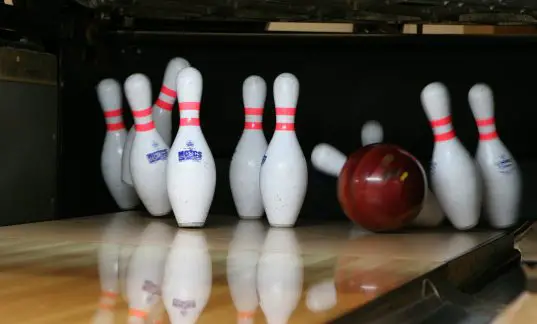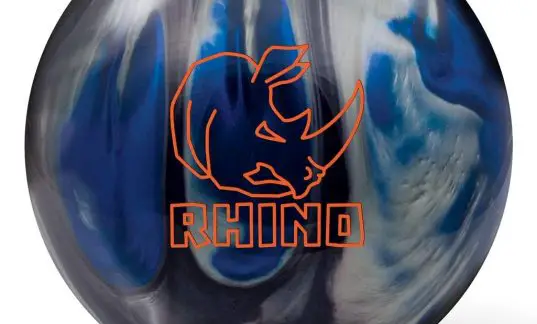Bowling wrist pain can be a major deterrent for any bowler, recreational or otherwise, from heading to the bowling lanes any given day. If you’re struggling with wrist pain from bowling (or wrist pain in general), it likely seems counterproductive for you to bowl and risk any further injury. However, such hesitation will keep you from growing as a bowler and from having a really good time doing it!
Wrist pain is common for bowlers due to the nature of the game and its physical requirements. If done incorrectly, bowling can be absolute hell on your wrists – especially considering they already function as one of the most vulnerable joints on the body. We’ve posted this article as a means for you to understand bowling wrist pain with more clarity, along with providing you with ways to safeguard yourself in a way that will keep you bowling and get you bowling better all together.
The Different Causes of Wrist Pain When Bowling
Bowling is a sport based upon and revolving around repetitive motion. Throwing a bowling ball over and over again can be an extremely dangerous proposition, especially if you’re a bowler who doesn’t stretch and starts throwing hooks and spins with no preparation. Even if you’re not throwing a max weight 16-pound ball, incorrect wrist positioning or flexing on a shot can lead to abnormal and repetitive stress on your throwing wrist.
Such disorders as carpal tunnel syndrome and tendinitis can easily be exacerbated by improper bowling form. Considering you’ll make an average of twenty throws or so per game and that most bowlers of any import are bowling three times a trip or more, you’re leaving yourself and your wrists at extreme risk if you –
a) Don’t acknowledge wrist pain when it shows itself
b) Find ways to adjust your game and adjust your form to alleviate the effects of such pain
c) Utilize a bowling wrist support if necessary to emphasize proper form and keep your wrist low through your throwing motion
No products found.
How to Limit Wrist Pain When Bowling
A fantastic rule of thumb to use is to never throw a bowling ball which exceeds ten percent of your total weight, with a 16-pound bowling ball being the maximum regardless. Doing a full-body stretching routine prior to bowling is also a potentially crucial decision for your wrist health, as your wrist won’t be forced to overcompensate for improper form or body limitations elsewhere. Your wrist can easily snap, so it’s not the right part of the body to be shouldering the load for other parts of your body.
Keep your wrist low through your shot as best you can, limiting the snap and torque of the wrist joint and using your entire arm to put power into your shot. If you need help to do so, consult our Ultimate Guide To Bowling Wrist Supports to find a bowling wrist guard that will help keep your wrist in place and limit potential injury.
With all that said, a doctor will have the best solution on how to limit wrist pain when bowling.
How to Alleviate Wrist Pain
The number one thing you need to know about bowling wrist pain is that it needs to be attended to as soon as symptoms show. If you ignore signs of a potential injury, your risk for greater injury and being knocked out of commission at the bowling lanes is significant. It is recommended that you have a doctor first look at your wrist to determine the extent of damage to your wrist, even if it’s just a mild sprain. The body has a funny way of lying to us, and what you think is just a sprain could be nerve or ligament damage.
Changing your form to protect your wrist from further injury is another key step, especially if you notice that the pain increases at a certain point of your shot. Take some time away from bowling if the pain is prevalent when you play, with a minimum of two weeks away being a good idea as soon as symptoms show. Ice massage will help numb the pain and decrease swelling. In more serious cases, your doctor might prescribe a wrist splint to keep it extended.
Finally, make sure your wear a bowling wrist guard if you haven’t been! A minor investment can go a long way in protecting your wrist from damage that will keep you off the lanes for good.
Can Bowling Cause Carpal Tunnel?
The most common cause of carpal tunnel syndrome is using a keyboard on a computer or repeated smartphone usage, so it may be unlikely that bowling caused your carpal tunnel syndrome if you are diagnosed with it. However, it is 100% true that athletes who participate in bowling, golf, and tennis are often affected by carpal tunnel syndrome and can see an exacerbation of symptoms if their form is off.
Your hand and your wrist are extremely crucial to your bowling shot, with your hand release and potential wrist snap leaving you open to potential injury. If you start to experience numbness in the thumb, index, or middle finger of your throwing hand, consult a doctor right away. Advanced bowlers are at major risk for the development and degeneration of carpal tunnel syndrome, especially if they engage in other daily activities which put them at risk.

Can You Sprain Your Wrist While Bowling?
The answer to this question is a resounding yes. Wrist injuries are extremely common for bowlers. The wrist was not designed to toss a heavy bowling ball repeatedly, and it’s especially vulnerable if the person who’s doing it isn’t exercising proper form and protecting their wrist from potential problems. Recreational and advanced bowlers alike have ended up at the doctor’s office for sprained wrists due to improper flexing or bending, as it’s simply one wrong move which means the difference between a healthy wrist and one that needs medical attention.
If you do happen to sprain your wrist while bowling, be sure to ice the injury right away and repeatedly throughout the coming days to reduce swelling. Try to keep your wrist elevated and utilize an anti-inflammatory medication such as Tylenol or Ibuprofen to reduce swelling and alleviate pain. And as stated before, be sure to ask for a doctor’s advice as soon as the injury presents itself to make sure it’s just a sprain and not something more serious.
What Does a Wrist Brace Do For Bowling?
A bowling wrist brace keeps your wrist rigid, eliminating awkward flexing and bending which is the number one cause of wrist sprains and other injuries. If you’re just beginning as a bowler, it’s extremely likely that you haven’t mastered the technique necessary to protect your wrist and keep it stretched out when you throw. A bowling wrist brace does that work for you, holding the wrist in place and keeping it from violently bending or flexing at the wrong time.
Also, bowling wrist braces are perfect for those of us who have limited strength in our hands and wrists to position ourselves correctly during a shot release. A good bowling wrist support holds the wrist firmly in place at the bottom of your swing, promoting correct ball release technique and allowing you to rotate the ball with more efficiency and torque. This means big things for someone with wrist problems, but it also does wonders for anyone looking to increase hook potential and pin carry at the end of their shots.
Dropping the wrist to a lower position increases your rev rate upon release, turning the hook potential of your bowling ball into hook sharpness. If you have weak wrists or trouble with your fingers, such a shot isn’t possible without help from a good bowling wrist brace or hand brace. Even if you have strong wrists, this kind of help for your shot is extremely valuable and worth the investment of buying a bowling wrist support. And furthermore, a bowling wrist brace will help prevent potential injury that will affect your game (and your entire life) down the road.
No products found.
What is the Purpose of a Bowling Glove?
Bowling gloves are built to offer support to people with preexisting hand injuries, with rigidity in the right spots of the glove that protects the hand and keeps it from flexing and causing more damage. A bowling glove does wonders for everything from carpal tunnel syndrome to wrist injuries, especially if you couple it with proper form and a good bowling wrist guard.
There are other benefits to a bowling glove, too. A good bowling glove is designed to give you a better grip on the bowling ball itself. Many bowling gloves are a bit sticky in the palm and along the fingers to promote a better hold and give you better control of the ball throughout your shot.
A bowling glove also provides padding which prevents calluses from forming as a direction result of friction between your hand and the ball. And if your hand is prone to sweating, a glove can absorb that and keep you from potentially injuring yourself with a slippery and poor grip.
What is Bowling Tape For?
A bowler’s thumb can swell or shrink depending on temperature, humidity or repeated motion from a bowling session. Thus, your grip on your bowling ball can change and become dangerously loose if your fingers shrink – leaving you open and vulnerable to potential hand and wrist injuries!
Bowling tape is used to help reshape the gripping holes of your bowling ball, allowing you to change and adjust the holding force of your thumb to its correct level when your thumb either shrinks or swells. There are two groupings of insert tape used for the thumb hole, with one being a textured white tape and the other being much smoother. Using this tape as the games go on allows a bowler to find a consistent shot and grip, increasing overall scores and decreasing the chance of an injury mishap resulting from a poor grip on the ball.
Closing Thoughts
Bowling wrist pain is both extremely common and extremely bothersome, and sometimes it can be a symptom of a serious injury. Taking proper precautions to protect your wrist and hand (such as using a bowling wrist guard, bowling tape, or a bowling glove) will decrease your chance of developing an injury or exacerbating a current injury. Be sure to pay attention to any pain that does arise during or after a bowling session, consulting a doctor to ensure that a painful symptom isn’t a sign of a potentially severe problem.

